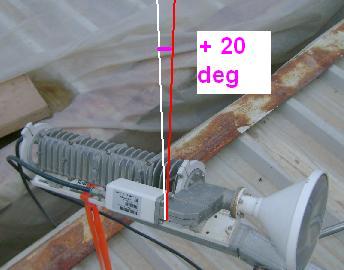Satellite Internet Forum.
Welcome, Guest. Forum rules.To search this site click here > SATSIG search
| Home Login Register |
| Satellite Internet forum › HughesNet and Hughes HX VSATs › DirecWay Dish Problems in Iraq |
|
Pages: 1
|
DirecWay Dish Problems in Iraq(Read 15129 times) |
|
philipg
Member
★★ Offline Posts: 4 |
Apr 10th, 2007 at 11:37am
|
| Back to top |
« Last Edit: Jan 10th, 2022 at 4:51pm by Admin1 »
IP Logged
|
|
USN - Retired
YaBB Moderator
★★★★★ Offline Posts: 837 Kentucky (USA) |
Reply #1 - Apr 10th, 2007 at 1:01pm
|
| Back to top |
USN (Ret)
IP Logged
|
|
Oasis Networks
Senior Member
★★★ Offline Posts: 232 |
Reply #2 - Apr 10th, 2007 at 1:11pm
|
| Back to top |
www.oasisnetworks.net - Oasis Networks - Online with you!
IP Logged
|
|
philipg
Member
★★ Offline Posts: 4 |
Reply #3 - Apr 10th, 2007 at 3:43pm
|
| Back to top |
« Last Edit: Oct 17th, 2022 at 2:23pm by Admin1 »
IP Logged
|
|
philipg
Member
★★ Offline Posts: 4 |
Reply #4 - Apr 10th, 2007 at 3:50pm
|
| Back to top |
IP Logged
|
|
Eric Johnston
Senior Member
★★★ Offline Posts: 2109 |
Reply #5 - Apr 10th, 2007 at 5:02pm
|
| Back to top |
« Last Edit: Jan 10th, 2022 at 4:46pm by Admin1 »
IP Logged
|
|
philipg
Member
★★ Offline Posts: 4 |
Reply #6 - Apr 11th, 2007 at 6:04am
|
| Back to top |
« Last Edit: Oct 17th, 2022 at 2:23pm by Admin1 »
IP Logged
|
|
Oasis Networks
Senior Member
★★★ Offline Posts: 232 |
Reply #7 - Apr 11th, 2007 at 7:23am
|
| Back to top |
« Last Edit: Apr 11th, 2007 at 11:36pm by Admin1 »
www.oasisnetworks.net - Oasis Networks - Online with you!
IP Logged
|
|
Ex Member
Ex Member
|
Reply #8 - Apr 28th, 2007 at 4:59am
|
| Back to top |
IP Logged
|
|
Ex Member
Ex Member
|
Reply #9 - May 5th, 2007 at 1:19pm
|
| Back to top |
IP Logged
|
|
wafanet
Senior Member
★★★ Offline Posts: 134 |
Reply #10 - May 13th, 2007 at 11:23am
|
| Back to top |
IP Logged
|
|
schroec
Member
★★ Offline Posts: 2 South Africa |
Reply #11 - Oct 11th, 2007 at 11:05am
|
| Back to top |
IP Logged
|
|
Eric Johnston
Senior Member
★★★ Offline Posts: 2109 |
Reply #12 - Oct 11th, 2007 at 11:51am
|
| Back to top |
« Last Edit: Jan 10th, 2022 at 4:47pm by Admin1 »
IP Logged
|
|
USN - Retired
YaBB Moderator
★★★★★ Offline Posts: 837 Kentucky (USA) |
Reply #13 - Oct 11th, 2007 at 11:59am
|
| Back to top |
USN (Ret)
IP Logged
|
|
Pages: 1
|
Email me: eric@satsig.net
Powered by YaBB 2.5.2!
YaBB Forum Software © 2000-. All Rights Reserved.
Disclaimer, Terms of Use and Privacy Forum User Agreement Forum rules Cookie policy.





